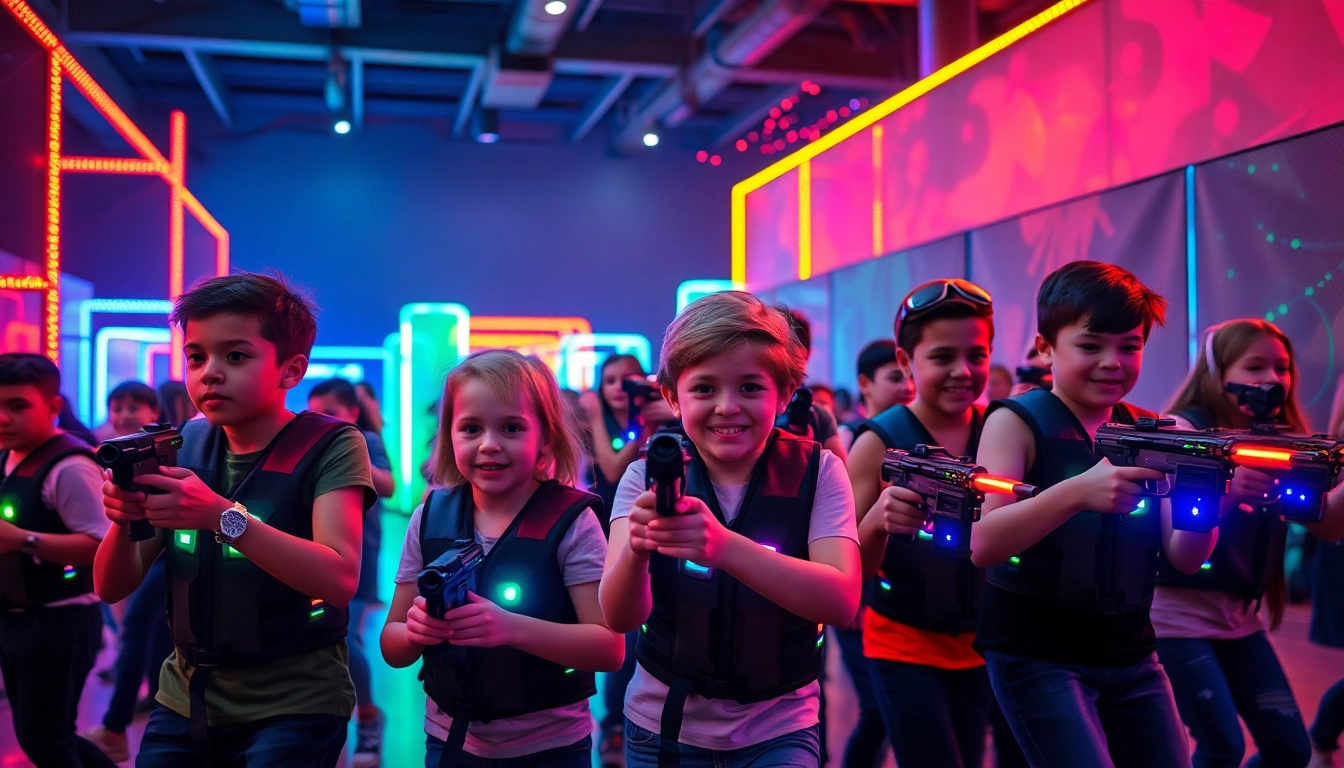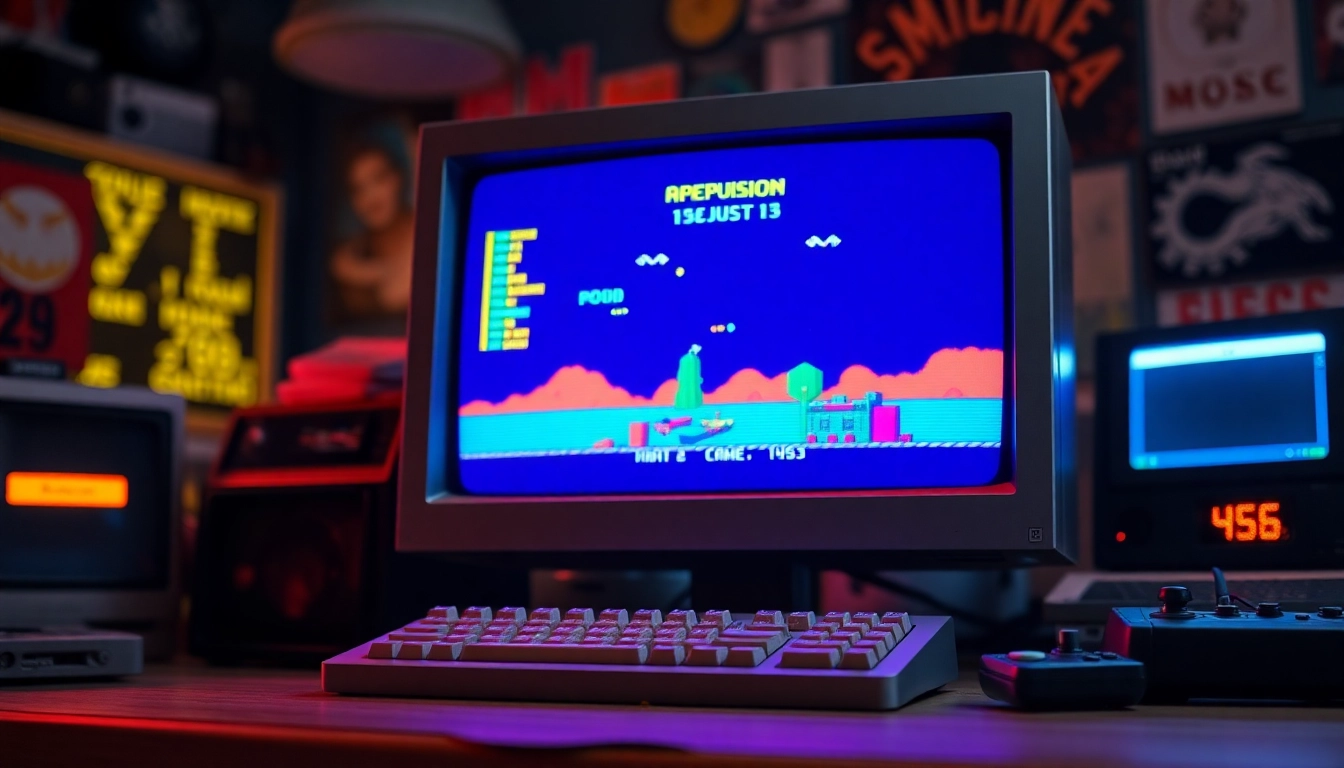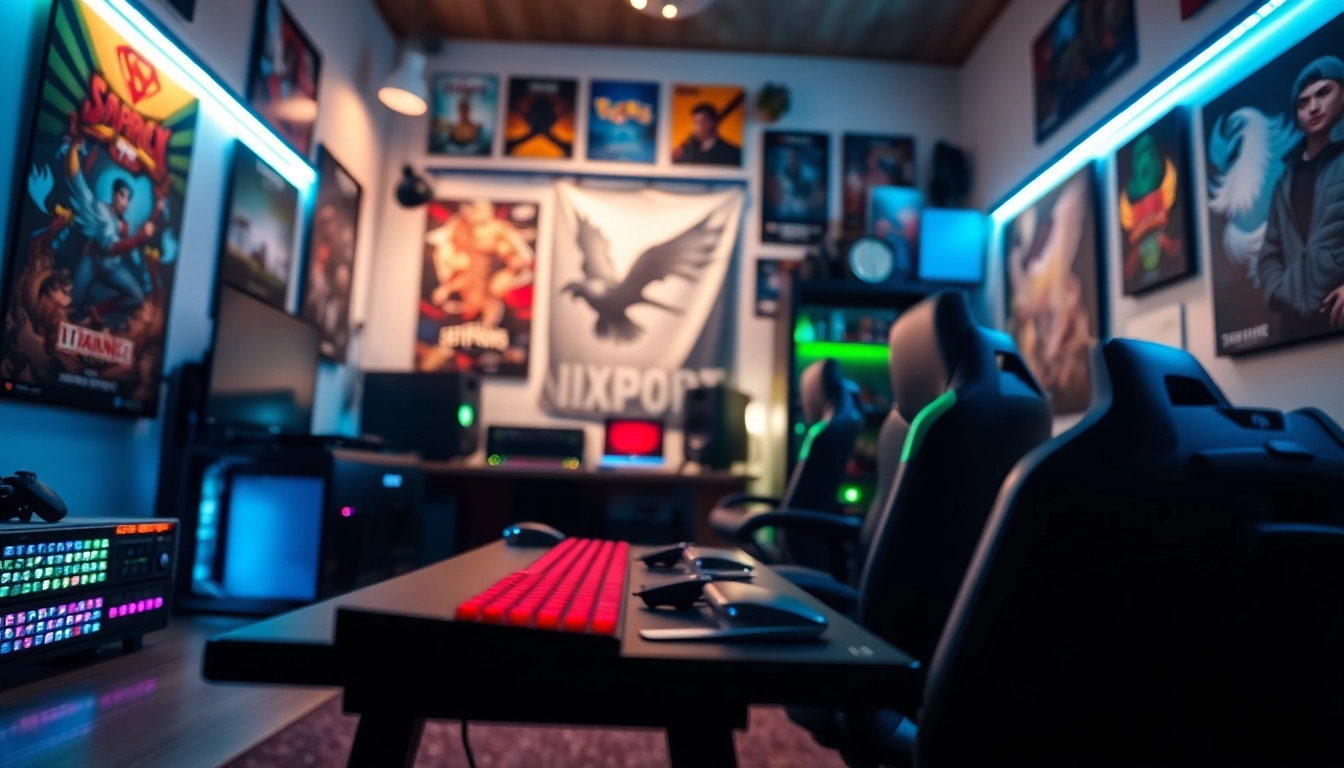Understanding Laser Tag: A Fun Recreational Activity
What is Laser Tag?
Laser tag is a popular recreational sport that combines elements of tag and shooting games, creating a unique and engaging experience for players of all ages. Participants use infrared-emitting light guns to tag opponents, represented as designated targets, while navigating through an arena filled with obstacles and hiding spots. With its thrilling gameplay and strategic elements, laser tag has evolved into a beloved activity for birthday parties, corporate events, and family outings. As an exciting hybrid of gaming and physical activity, it encourages teamwork, strategy, and physical fitness in a fun and safe environment. For more on this dynamic activity, check out this comprehensive guide to laser tag.
History of Laser Tag
The origins of laser tag can be traced back to the late 1970s and early 1980s. The concept was inspired by science fiction, particularly the 1977 film “Star Wars,” which introduced audiences to laser technology. The first official laser tag game, called “Photon,” launched in 1984 and featured players wearing vests that registered hits from laser guns. In the 1990s, laser tag gained popularity with the advent of family entertainment centers, which offered laser tag arenas and technology enhancements, leading to more immersive experiences. Today, laser tag is a global phenomenon, with numerous venues and innovative equipment catering to both casual gamers and serious enthusiasts.
How Laser Tag Works
Laser tag involves players using light-based weaponry to score points by tagging opponents with laser beams. The game can be played in various formats, including team versus team, free-for-all, and objective-based missions. Players typically wear vests equipped with sensors that detect hits from laser guns. The basic mechanics of laser tag include:
- Equipment: Each player is equipped with a laser tag gun and a vest with sensors.
- Gameplay Objective: The primary goal is to score points by tagging opponents while avoiding being tagged.
- Rules and Variations: Different venues may have specific rules, including time limits, score limits, and special power-ups.
This combination of technology and strategy makes laser tag a dynamic and engaging sport that can adjust to various player skill levels and preferences.
Choosing the Right Laser Tag Equipment
Types of Laser Tag Guns
The heart of any laser tag experience lies in the equipment used, particularly the guns. There are several types of laser tag guns available, catering to different levels of play:
- Infrared Guns: These are the most common type used in commercial laser tag arenas. They emit infrared beams that are detected by sensors on vests.
- Laser Tag Blasters: Recreational versions for home use often feature additional functionalities like sounds, vibrations, and customizable settings.
- Laser Tag with Augmented Reality: Some advanced systems incorporate AR technology, adding another layer of immersion and strategy by allowing players to interact with digital elements in the physical arena.
When selecting laser tag guns, consider factors such as range, accuracy, durability, and comfort, as these elements greatly influence the gameplay experience.
Essential Gear for Players
In addition to laser guns, players should be equipped with essential gear that enhances comfort and performance during gameplay. This can include:
- Vests: Ensure that vests are comfortable and fit securely, as they are vital for detecting hits.
- Footwear: Closed-toe shoes with good traction are crucial, especially in indoor arenas with various obstacles.
- Protective Gear: While laser tag is generally safe, some players may prefer to wear goggles or knee pads for added protection during intense games.
Choosing the right gear can significantly affect players’ experience, allowing them to concentrate on strategy and gameplay rather than discomfort.
Buying vs. Renting Equipment
Players and organizers often face the decision of whether to buy or rent laser tag equipment. Here are some considerations to help make that choice:
- Buying Equipment: Ideal for regular players or those who frequently host events. Ownership allows for full customization and maintenance, but it requires a higher initial investment.
- Renting Equipment: A practical choice for occasional players or those organizing one-off events. It requires less upfront capital and eliminates the hassle of maintenance, but ongoing rental costs should be considered.
Both options have their merits; the choice often depends on frequency of use, budget constraints, and specific event needs.
Top Laser Tag Venues and Experiences
Indoor Laser Tag Arenas
Indoor laser tag arenas typically feature elaborate designs, obstacles, and themed environments that enhance the gaming experience. These venues are often climate-controlled, making them suitable for play year-round. The attractions can include:
- Multi-Level Arenas: They offer various pathways and hideouts, promoting strategic play and tactical maneuvering.
- Theme-Based Sections: From war zones to space battles, themed arenas can immerse players in different narratives.
- High-Tech Features: Many modern venues boast digital scoreboards, lighting effects, and sound systems that elevate the atmosphere.
Indoor arenas are great for organized events, birthday parties, and family outings, providing a controlled environment where players can focus on the game without external distractions.
Outdoor Laser Tag Adventures
Outdoor laser tag provides a unique twist by allowing players to engage in realistic battle scenarios in natural environments. Such venues often use wooded areas or large outdoor spaces, offering benefits like:
- Variety of Terrain: Diverse landscapes provide opportunities for tactical movements and ambush tactics.
- Team Objectives: Outdoor games often include mission-based objectives such as capturing flags or defending positions, increasing the excitement and complexity of gameplay.
- Connection with Nature: Playing outdoors allows participants to enjoy fresh air and nature while getting physical activity.
This setting can significantly enhance the gaming experience, appealing to players who enjoy physical challenges and strategic play in more dynamic arenas.
Special Events and Group Activities
Laser tag is an excellent activity for a variety of special occasions. Its adaptability and exciting nature make it suitable for:
- Birthday Parties: Laser tag is a popular choice for children’s birthdays, providing an action-packed atmosphere for young guests.
- Corporate Team Building: Companies often use laser tag for team-building events, promoting cooperation and strategic thinking among employees.
- Fundraising Events: Organizing laser tag tournaments can help raise funds for community projects and non-profit organizations while promoting fun and camaraderie.
With various options to customize events, laser tag venues can cater to both small groups and large gatherings, making it a versatile choice for any occasion.
Tips for a Successful Laser Tag Game
Basic Strategies to Win
While laser tag is inherently fun, incorporating some strategic elements can greatly enhance gameplay. Here are some basic strategies to consider:
- Stay Mobile: Moving around prevents opponents from easily targeting you and allows you to find better vantage points.
- Work as a Team: Communicate with teammates to execute offensive and defensive strategies effectively, coordinating movements and attacks.
- Utilize Cover: Use obstacles and walls to shield yourself from opponents while planning your next move.
By implementing these strategies, players can improve their chances of success while enhancing the overall enjoyment of the game.
Team Roles and Cooperation
Understanding team dynamics is crucial in laser tag. Assigning specific roles can elevate gameplay and enhance group cooperation. Common roles might include:
- Scouts: Fast and agile players who scout enemy positions and relay information to the team.
- Defenders: Positioned to protect vulnerable areas or teammates and control high-traffic zones.
- Offensive Players: Leaders in attack strategy, focusing on engaging and tagging opponents effectively.
Establishing these roles before gameplay starts can lead to better coordination and adaptability, which are critical to winning matches.
Common Mistakes and How to Avoid Them
Even seasoned players can fall prey to common pitfalls during laser tag. Here are some mistakes to avoid:
- Not Communicating: Failing to communicate with teammates can lead to disorganization and vulnerability to opponents.
- Overexposing Yourself: Being careless with positioning can result in easy targeting from opponents. Always find cover.
- Ignoring Your Surroundings: Be aware of other players’ locations and movements to avoid being caught off-guard.
By remaining vigilant and learning from past experiences, players can refine their gameplay, leading to more successful outcomes in future matches.
Organizing a Laser Tag Event
Planning a Birthday or Corporate Event
When organizing a laser tag event, careful planning is essential to ensure participants have a memorable experience. Here are steps to consider:
- Choose the Right Venue: Select a laser tag arena that suits your group size and event requirements, ensuring it can accommodate your expected number of guests.
- Create an Agenda: Plan the timeline of the event, including play sessions, breaks, and any additional activities like food or awards.
- Communicate Details: Keep guests informed about what to expect, including attire and safety guidelines.
These steps will provide a framework for success, ensuring smooth execution and an enjoyable experience for all participants.
Setting Up a Laser Tag Tournament
For avid players or groups looking to level up their laser tag experience, hosting a tournament can create an exciting and competitive atmosphere. Consider the following:
- Define Tournament Structure: Decide on formats such as elimination brackets, round-robin, or point systems for scoring.
- Schedule Matches: Create a schedule that allows for fair play and ample time for each match.
- Prizes and Recognition: Consider offering prizes or recognition for winners to enhance competition and motivation.
Organizing a tournament not only fosters competitiveness but also builds camaraderie among players, creating a festive environment centered around laser tag.
Creating Unforgettable Memories
At the heart of every laser tag event is the opportunity to create memorable experiences. Here are some tips to ensure your event stands out:
- Capture the Moment: Consider appointing someone to take photos or videos, helping guests relive their experience long after the event.
- Encourage Team Spirit: Promote team themes or uniforms to enhance the camaraderie and excitement among players.
- Gather Feedback: After the event, solicit feedback from participants to learn what worked well and what could be improved for next time.
By focusing on these elements, hosts can ensure their laser tag events are not just fun but also become cherished memories for all involved.



